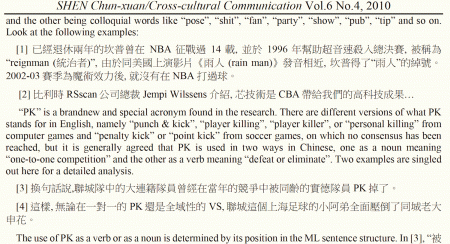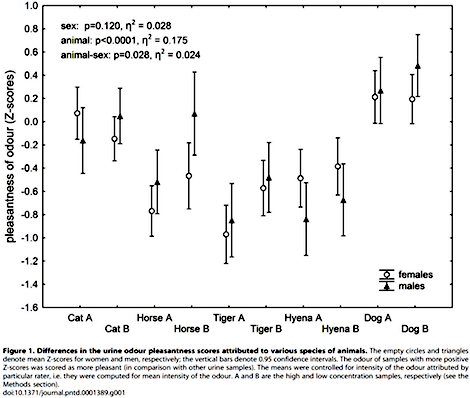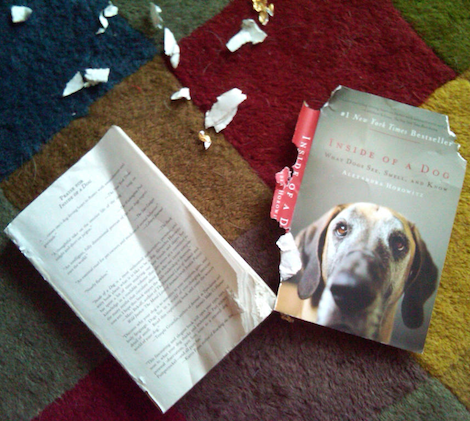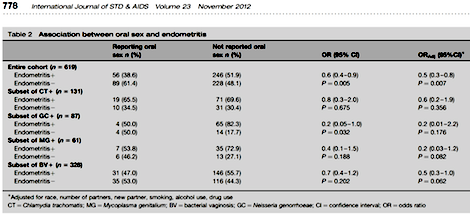Marc Abrahams's Blog, page 529
December 13, 2012
December mini-AIR: Shoulder sampling, rat catcher, etc.
 The December issue of mini-AIR just went out. Topics include:
The December issue of mini-AIR just went out. Topics include:
Perspicacity into the Nexus of Moral Maxims
Shoulder sampling
Experiences of a Reluctant Rat-Catcher
and more
It also has info about upcoming events.
Mel [pictured here] says, “It’s swell.” (mini-AIR is the simplest way to keep informed about Improbable and Ig Nobel news and events. Just add yourself to the mini-AIR list, and mini-AIR will be emailed to you every month)

December 12, 2012
A confusing study: Chinese Sports Reports
Non-specialists may find the following study to be delightfully confusing. Here’s the citation, and a snippet from the whole thing. (Click on the image to see an enlargement of it. Click on the title link to obtain a copy of the entire article.):
“A Study of Chinese-English Code-switching in Chinese Sports News Reports,” Chun-xuan Shen, Cross-cultural Communication, vol 6, no 4 (2010). (Thanks to investigator Catherine Caldwell-Harris for bringing this to our attention.) The author explains that: “This paper reports a study of Chinese-English code-switching in Chinese sports news reports with an aim to provide a better understanding of the linguistic features of Chinese-English code-switching.”
BONUS: The journal, Cross-cultural Communication, is sometimes described as “a peer-reviewed petroleum journal.”

Men, Women and Parasites: The Pleasantness of Smelling Urine
Still another finding about cats and “fatal attraction”:
“Fatal Attraction Phenomenon in Humans – Cat Odour Attractiveness Increased for Toxoplasma-Infected Men While Decreased for Infected Women,” Jaroslav Flegr [pictured here], Pavlína Lenochová, Zdeněk Hodný, Marta Vondrová, PLoS Neglected Tropical Diseases, no. 5, vol. 11, epub November 8, 2012, e1389. The authors, at Charles University and at the Institute of Molecular Genetics ASCR, both in Prague, Czech Republic, report:
“Latent toxoplasmosis, a lifelong infection with the protozoan Toxoplasma gondii, has cumulative effects on the behaviour of hosts, including humans. The most impressive effect of toxoplasmosis is the so-called “fatal attraction phenomenon,” the conversion of innate fear of odour of the definitive host, the cat, into attraction to cat odour in rodents infected with Toxoplasma. While most behavioural effects of Toxoplasma infection were confirmed also in humans, neither the fatal attraction phenomenon nor any toxoplasmosis-induced changes in olfactory functions have been searched for in them. Our study performed on 34 Toxoplasma-infected and 134 noninfected students showed that the infected men rated odour of cat urine as more pleasant than did the noninfected men, while infected women rated the same odour as less pleasant than did noninfected women. No significant effect of toxoplasmosis on the urine odour pleasantness was found for horse, tiger, brown hyena and dog. The possible absence of the effects of toxoplasmosis on the urine odour pleasantness score attributed to tiger would suggest that the amino acid felinine, which is absent in urine of large cats, could be responsible for the fatal attraction phenomenon.”
Here is a chart from the study, about the odour pleasantness of urine that was attributed to horse, tiger, brown hyena and dog:
(Thanks to investigator Neil Martin for bringing this to our attention.)

December 11, 2012
Santa Claus Internet Jokes (a Latvian study)
Guntis Pakalns, who is senior researcher, Dr.philol. at the Archives of Latvian Folklore, Institute for Literature, Folklore and Art at University of Latvia, has collated a unique and very extensive collection of Christmas-related humorous images and video clips found on the Internet. Dr. Pakalns outlines his project thus:
“The central part of the article is devoted to a brief overview of the most characteristic groups of the jokes (with links to the images, video and descriptions of the traditions): Santa Claus as the bringer of presents, his trip from the north-land and his friend Rudolph the Red-Nosed Reindeer, arrival through the chimney, different other persons wearing Santa’s hat (politicians, terrorists, women, animals, etc.), Santa’s sexuality, drunken Santa, Santa murdered/killed, etc.”
Visual Jokes about Christmas and Santa Claus on the Internet – Why and Why not? is available in full, free of charge, courtesy of the journal Folklore, vol.50, 2012.
NOTE: Some of the images in the paper may not be are very probably not suitable for those with a sensitive disposition towards Santa Claus.
On the other hand, as the author puts it : “ … maybe we do not need to study and explain everything, maybe even a scholar has the right to simply enjoy these jokes … So, Merry Christmas!”

December 10, 2012
Announcing the e-book version of the Annals of Improbable Research
We are now publishing each issue of our magazine — the Annals of Improbable Research — as an e-book, as well as on paper.
We invented a simple way to solve a big problem — a problem that haunts pretty much every magazine publisher (and other publishers, too).
Here I will explain (A) the problem we solved, and (B) how we solved it — and why we think our little invention is a big deal for anyone who publishes magazines and for anyone who reads them.
A. The Problem: magazines are not available as e-books
E-books are becoming the dominant form in which people get and read books. These e-books have two important qualities:
they are comfy to obtain (from Amazon, Barnes & Noble, etc.), and
they are comfy to read on pretty much any device, on both big screens and tiny screens (mobile phones).
Those books have a third pertinent quality: they are mostly text. For nicely formatted publications — hello, magazines! — e-book versions have until now been impractical-to-impossible.
Yes, some magazines are available in digital form — but, as far as we are aware:
you can read them on only a few, particular devices; and
they are uncomfortable-to-intolerable to read on a tiny screen (mobile phone).
B. What We Invented: how to make a magazine into an ebook for all screens
We wanted to make our magazine issues into e-books comfortable to read on a tiny screen (such as a mobile phone), as well as on a big screen. If you have ever tried to read a nicely formatted document (a PDF, for example) on a mobile phone, you know that it’s excruciatingly awkward to navigate your way through a page.
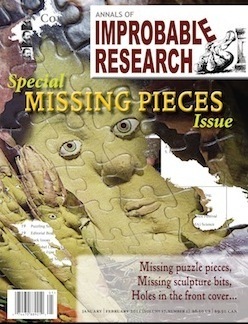 That’s why we invented a special format. Each of our e-books contains TWO copies of the magazine, each with the same content. The first copy is formatted in a simple, small-screen-friendly way. The second copy shows the same issue of the magazine, but formatted in full glory, exactly as it appears in the print edition.
That’s why we invented a special format. Each of our e-books contains TWO copies of the magazine, each with the same content. The first copy is formatted in a simple, small-screen-friendly way. The second copy shows the same issue of the magazine, but formatted in full glory, exactly as it appears in the print edition.
This two-in-one format is just a wee, little innovation. But it solves the problem of how to make a magazine (or any publication that has a complex layout) that people can get and read as a standard e-book.
Using this format, we can take an issue of our magazine, and produce an e-book version that’s available on Amazon and on Barnes & Noble (and soon on Google and iTunes and elsewhere). This e-book version is comfortable to read on any device that handles e-books — comfy on tiny screens and big screens.
We invite you to download a free e-book issue of the Annals of Improbable Research!
If you like it, you can find (and, we hope, buy) other issues.
Whodunnit
Here at Improbable Research, Lauren Maurer did most of the hard, careful, often-frustrating work of turning the concept into the actual e-books. Geri Sullivan contributed a helping of her famous design expertise and wisdom.
Many people helped us, especially in learning about many of the undocumented quirks of the Kindle, the Nook, and other e-book readers, and finding many equally-bedeviling quirks of the various online e-bookstores. I’d like to mention a special few individuals who knowledgably, kindly, patiently helped in a big way: Ben Biggs, David Foulser at Google; Ros Reid at Harvard SEAS; and Sara Montgomery and Nick Sidwell at The Guardian.
Please Spread the Word
There’s a tremendous amount of published, complexly-formatted material — magazines and lots more — that until now has been un-offerable and unobtainable in a comfortable digital form. Please help us spread the word to other publishers that they, too, can make make their magazines (and whatnot) into e-books.

Corporate psychopaths, classified on a page
Dog-eared pages, wolfed by a pooch
Ivan Oransky announces: “Apparently part of Alexandra Horowitz‘s “Inside of a Dog” is now inside of our dog.”

Study: “Oral sex is associated with less endometritis”
A new study speaks of, or at rather hints at, a possible benefit of the practice known as oral sex:
“Stimulating an Immune Response? Oral Sex is Associated with Less Endometritis,” Rudiger Pittrof, E. Sully, D. C. Bass, S. F. Kelsey, R. B. Ness [pictured here], and C. L. Haggerty, International Journal of STD & AIDS, vol. 23, no. 11, 2012, pp. 775-80. The authors, at Guy’s and St Thomas’ NHS Foundation Trust, London, UK, Princeton University, USA, The University of Pittsburgh, USA, The University of Texas School of Public Health, Houston, Texas, USA, report:
“To determine whether oral sex could be a protective factor for PID [Pelvic Inflammatory Disease] the relationship between self-reported oral sex and endometritis was analysed among 619 women with clinically suspected PID who participated in the PEACH [PID Evaluation and Clinical Health] study. Nearly one quarter of participants reported oral sex in the past four weeks. These women also reported a higher number of sexual partners, a new partner within the past four weeks and a higher frequency of sexual intercourse (all P < 0.03). They were more likely to smoke (P < 0.0001), drink alcohol (P < 0.004) and use recreational drugs (P < 0.02). Participants reporting oral sex were significantly less likely to be black or to have a positive test for Neisseria gonorrhoeae (7.8% versus 21.6%, P = 0.001). Women who disclosed oral sex were significantly less likely to have endometritis after adjusting for race, number of partners, recent new partner, smoking, alcohol use and drug use (adjusted OR 0.5 [0.3–0.8]). This is the first paper showing a negative association between oral sex and endometritis…. This hypothesis needs to be tested in further studies.”
The report hints at one area of inquiry for those future studies:
“We did not provide any definition of ‘oral sex’ and the question did not differentiate between fellatio and cunnilingus.”
(Thanks to investigator John White, Co-Editor-in-Chief of the journal, for bringing this to our attention.)

Food and thought, separated by a doorway
Details from an event happening December 18 at Harvard Medical School in two carefully separated parts:
The Staphylococcus Aureus Bi-Component Toxins and the Disarmament of the Cellular Immune Response
Refreshments served at 12:15 pm outside the room.

December 9, 2012
Santa Claus on the couch
CLICK-CAUTION: the following may contain spoilers regarding the ‘reality’ (or otherwise) of Santa.
Santa is an essential part of Christmas. But can Santa be understood through the psychoanalytic concepts of fetishism, ambivalence and narcissism? Some say yes, he can. Take for example Dr. Robert Cluley PhD, currently Lecturer in Marketing at Nottingham University Business School, UK. In a paper for the journal Organization, November 2011 vol. 18 no. 6 , Dr. Cluley put forward his thesis : The organization of Santa: fetishism, ambivalence and narcissism (US$32.00 for non-subscribers). The abstract explains:
The article argues that parents’ role in this organization of Santa can be understood through the psychoanalytic concepts of fetishism, ambivalence and narcissism. The article concludes that parents’ misinform their children about Santa in order to meet their own narcissistic wishes. They organize a world based on an image they wish were true as if it were true.

Marc Abrahams's Blog
- Marc Abrahams's profile
- 14 followers


